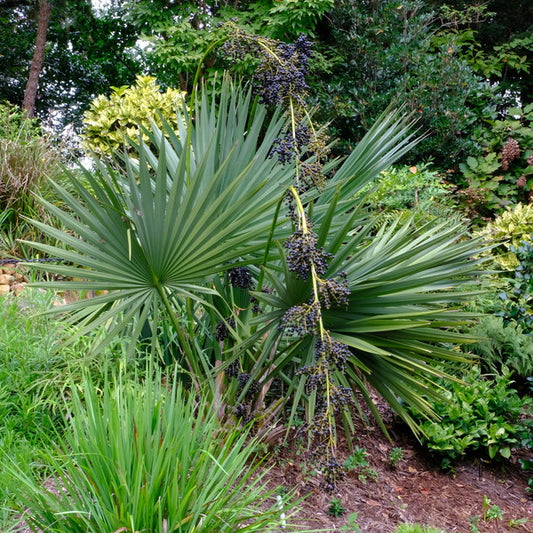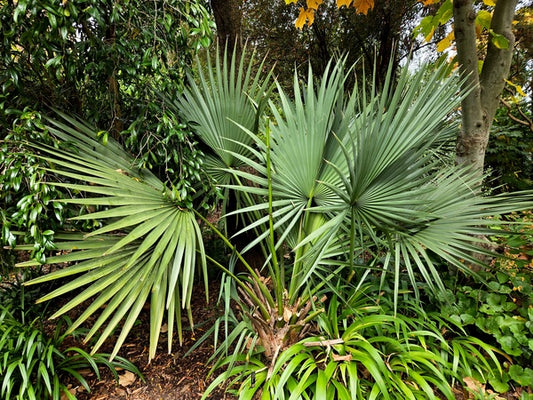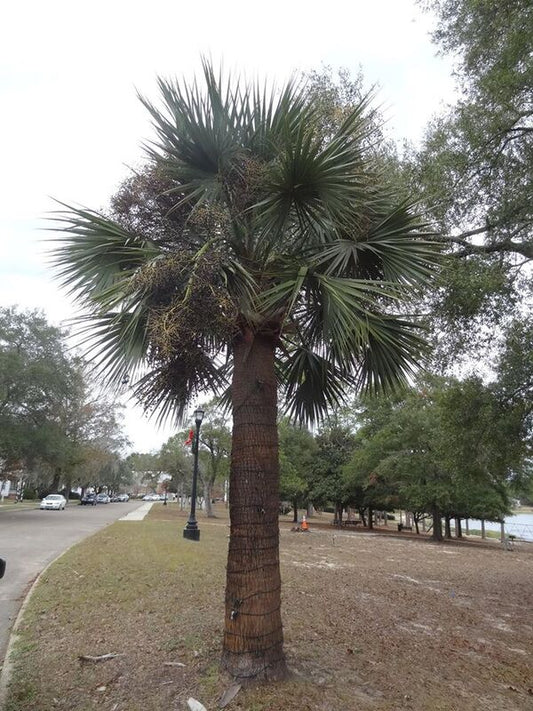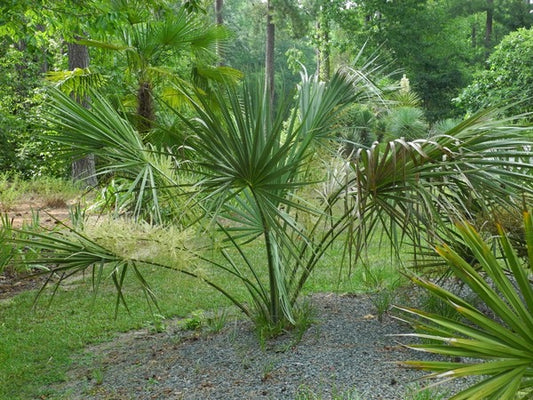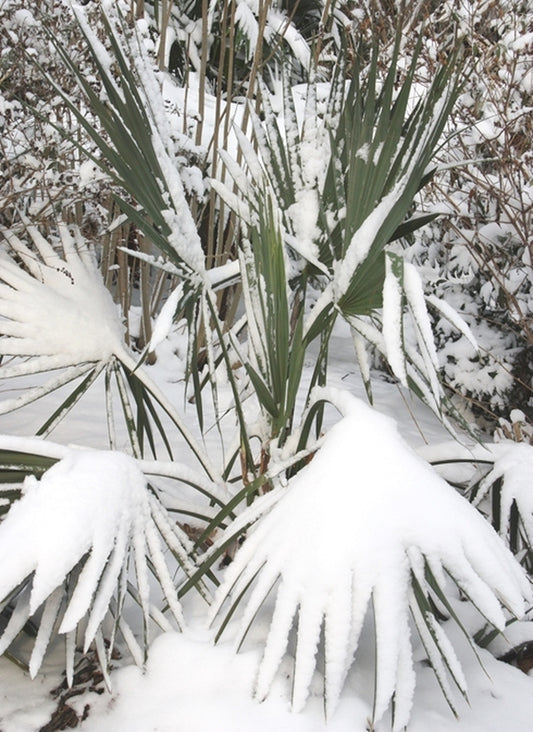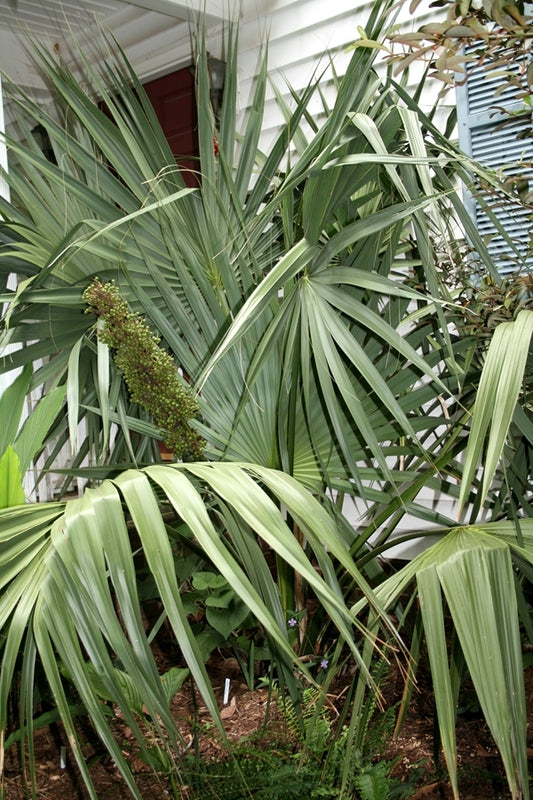Sabal palms are easy-to-grow, subtropical, evergreens native to the Southeastern US. While many species are cold hardy, Sabal palms prefer warm summers and will not survive well in cool summer climates. If you're looking for a cold hardy sabal, Sabal minor 'McCurtain' is hardy to USDA Zone 6b, possibly colder.
-
Sabal 'Blackburniana'
Item #: 6220
Zones: 7b to 10b
Dormancy: Evergreen
Height: 180" tall
Culture: Sun to Light Shade
Origin: Hybrid
Pot Size: 3.5" pot (24 fl. oz/0.7 L)
Regular price $30.00Regular priceUnit price per -
Sabal x brazoriensis
Item #: 1741
Zones: 7b to 10b, possibly colder
Dormancy: Evergreen
Height: 240" tall
Culture: Sun to Part Sun
Origin: United States
Pot Size: 3.5" pot (24 fl. oz/0.7 L)
Regular price $30.00Regular priceUnit price per -
Sabal 'DeFuniak'
Item #: 15648
Zones: 7b to 10b, guessing
Dormancy: Evergreen
Height: 400" tall
Culture: Sun to Part Sun
Origin: United States
Pot Size: 3.5" pot (24 fl. oz/0.7 L)
Regular price $26.00Regular priceUnit price per -
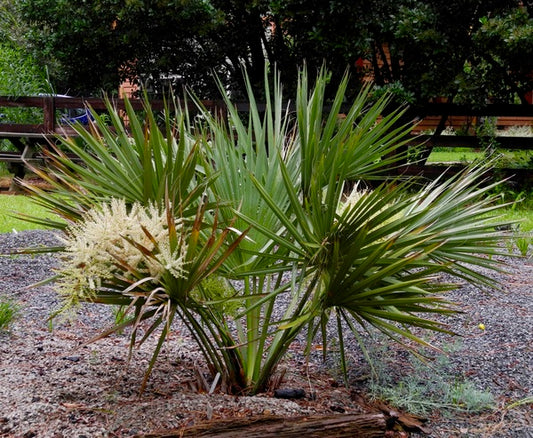 Sold out
Sold outSabal etonia
Item #: 3857
Zones: 7b to 10b, at least
Dormancy: Evergreen
Height: 48" tall
Culture: Sun to Part Sun
Origin: United States
Pot Size: 3.5" pot (24 fl. oz/0.7 L)
Regular price $30.00Regular priceUnit price per -
Sabal miamiensis
Item #: 14303
Zones: 7b to 10b, at least
Dormancy: Evergreen
Height: 78" tall
Culture: Sun to Part Sun
Origin: United States
Pot Size: 3.5" pot (24 fl. oz/0.7 L)
Regular price $30.00Regular priceUnit price per -
Sabal minor 'McCurtain'
Item #: 2006
Zones: 6b to 10b, possibly colder
Dormancy: Evergreen
Height: 72" tall
Culture: Sun to Light Shade
Origin: United States
Pot Size: 3.5" pot (24 fl. oz/0.7 L)
Regular price $28.00Regular priceUnit price per -
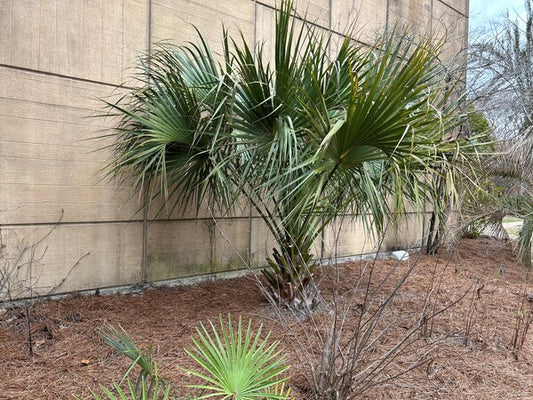 Sold out
Sold outSabal x palmarum 'Just Cause'
Item #: 16952
Zones: 8b to 10b, guessing
Dormancy: Evergreen
Height: 360" tall
Culture: Sun to Part Sun
Origin: Hybrid
Pot Size: 3.5" pot (24 fl. oz/0.7 L)
Regular price $28.00Regular priceUnit price per -
Sabal x palmarum 'Me Too' (palmetto x causiarum)
Item #: 16953
Zones: 8b to 10b, guessing
Dormancy: Evergreen
Height: 360" tall
Culture: Sun to Part Sun
Origin: Hybrid
Pot Size: 3.5" pot (24 fl. oz/0.7 L)
Regular price $28.00Regular priceUnit price per -
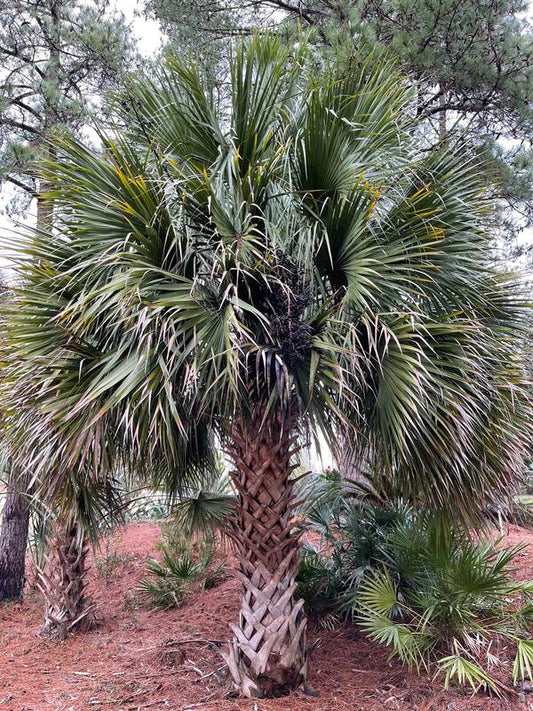 Sold out
Sold outSabal palmetto 'Augusta'
Item #: 16946
Zones: 7b to 10b
Dormancy: Evergreen
Height: 360" tall
Culture: Sun to Part Sun
Origin: United States
Pot Size: 3.5" pot (24 fl. oz/0.7 L)
Regular price $30.00Regular priceUnit price per -
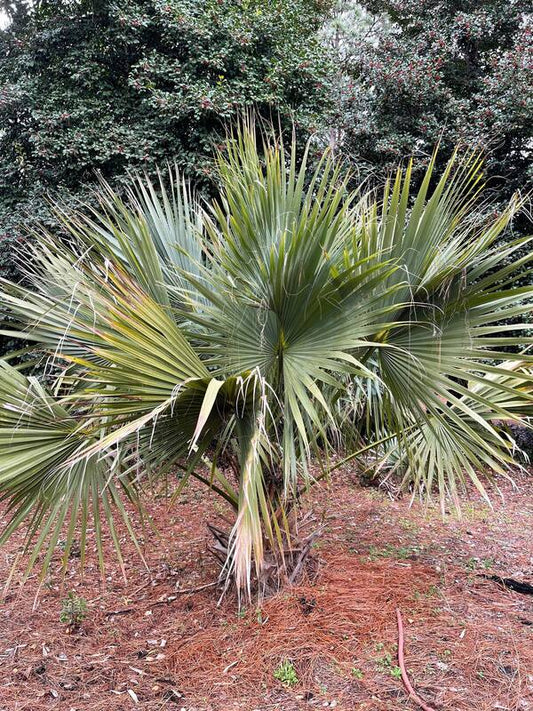 Sold out
Sold outSabal rosei 'Augusta Rose'
Item #: 17571
Zones: 8a to 8b
Dormancy: Evergreen
Height: 480" tall
Culture: Sun
Origin: Mexico
Pot Size: 3.5" pot (24 fl. oz/0.7 L)
Regular price $23.00Regular priceUnit price perThis plant is available for JLBG Members only.
-
Sabal tamaulipensis
Item #: 6222
Zones: 7b to 10b, at least
Dormancy: Evergreen
Height: 96" tall
Culture: Sun to Light Shade
Origin: Mexico
Pot Size: 3.5" pot (24 fl. oz/0.7 L)
Regular price $30.00Regular priceUnit price per -
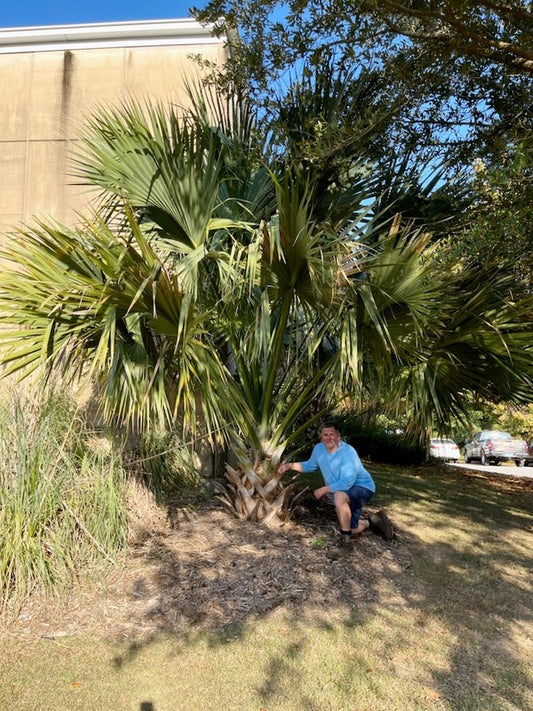 Sold out
Sold outSabal uresana
Item #: 5650
Zones: 8a to 10b, at least
Dormancy: Evergreen
Height: 720" tall
Culture: Sun to Part Sun
Origin: Mexico
Pot Size: 3.5" pot (24 fl. oz/0.7 L)
Regular price $26.00Regular priceUnit price per
More Information About Sabal
Although many species, such as Sabal minor are US natives (including North Carolina), sabal palms are often overlooked as an important element of a native plant garden. Forever pushing the limits of cold hardiness to bring new plants to you, we have assembled a group of cold hardy sabal palms for sale from various seed sources. You can grow sabal palm trees in a mixed border for their dramatic bold foliage or as a mass naturalistic planting.
Sabal Palm Growing Conditions
Some subterranean-trunked sabal palms can be grown as far north as Zone 6 which includes northern Oklahoma, Kentucky, southern Pennsylvania, and coastal Massachusetts. Sabal palm trees prefer warm summers and will not survive well in cool summer climates such as in the Pacific Northwest (try trachycarpus instead). In all cold climates, we recommend growing indoors for a season before planting outdoors. Winter mulch protection for the first few years is always helpful in colder climates. Some species, such as the shrub Sabal minor, grow as marginal plants near swamps in warmer locations, while the tree form Sabal palmetto and dwarf Sabal etonia grow in drier soils.
Check out our article on Sabal minor.


